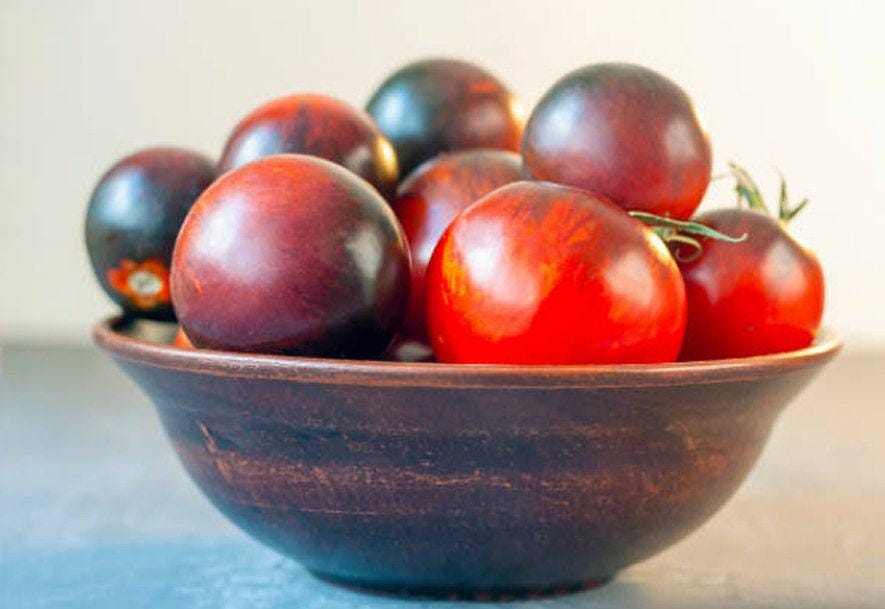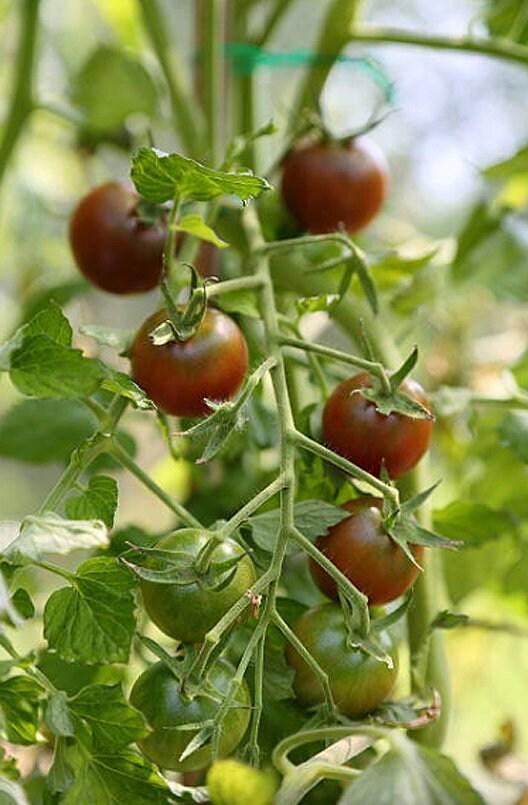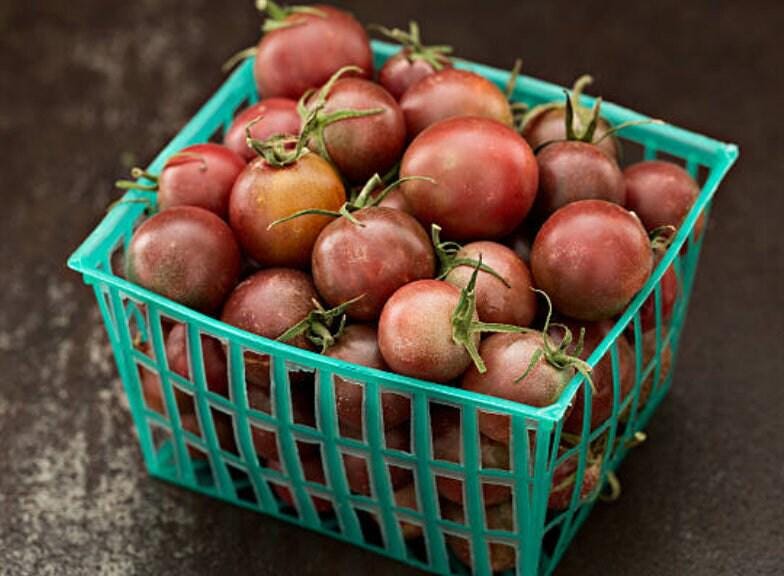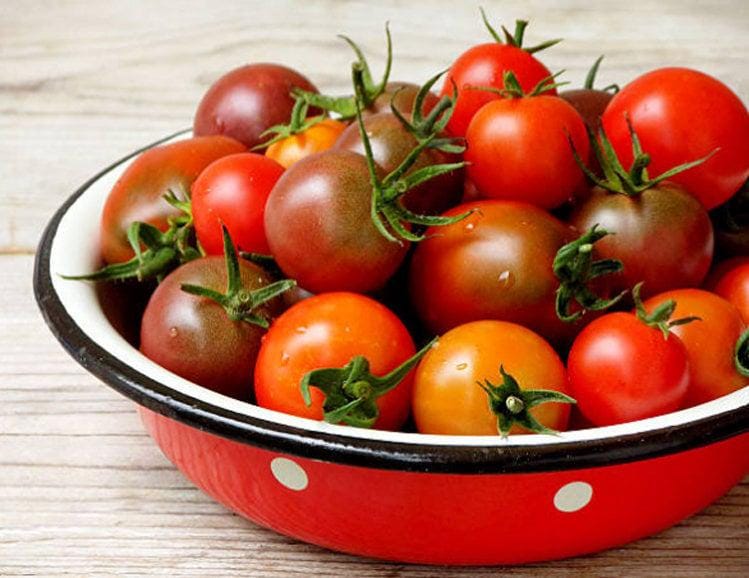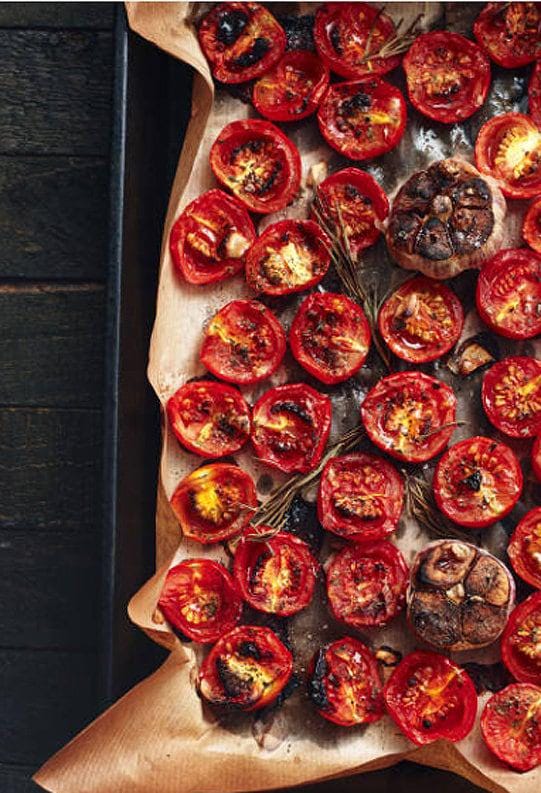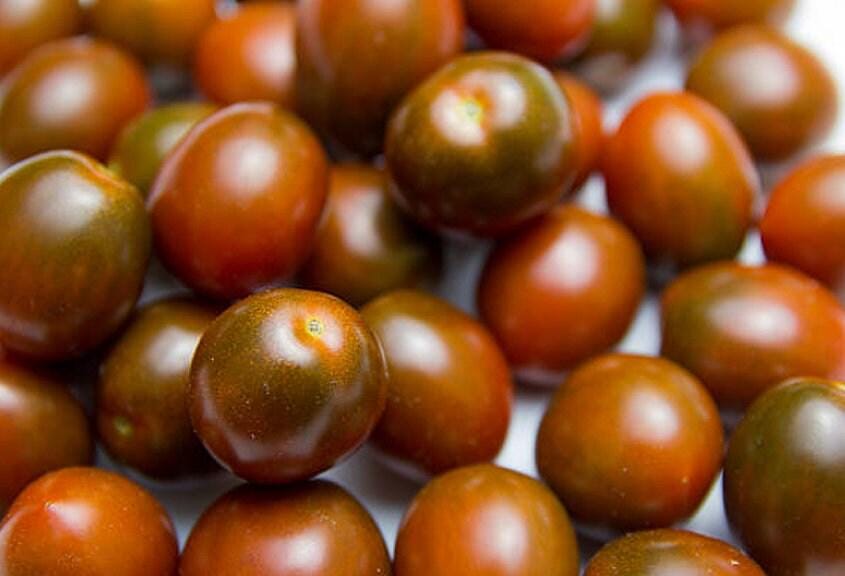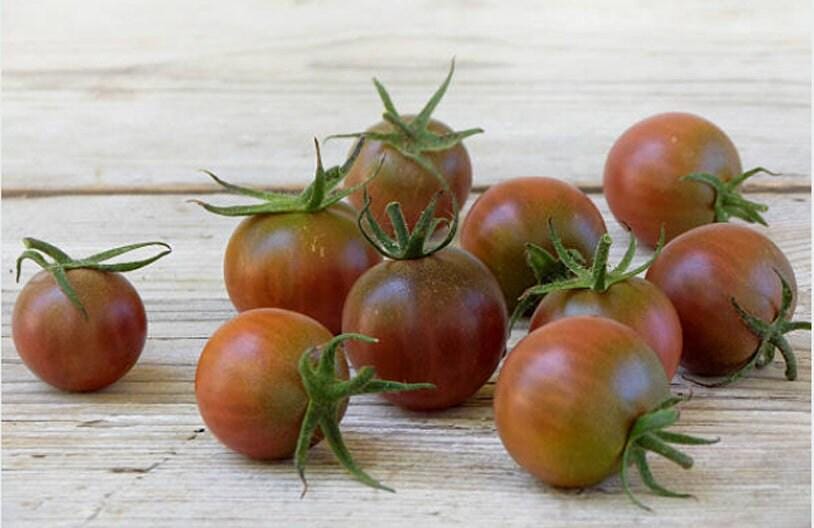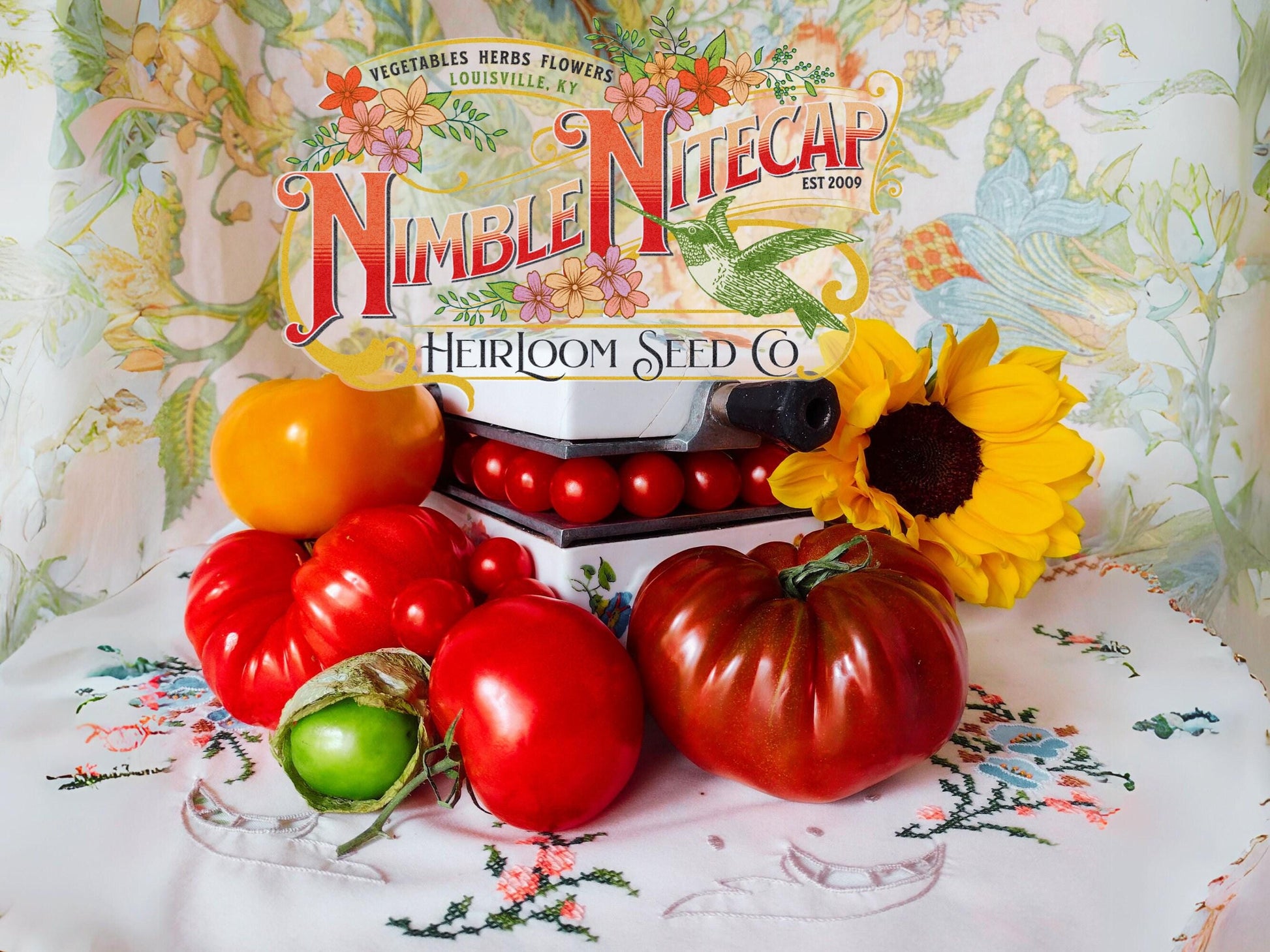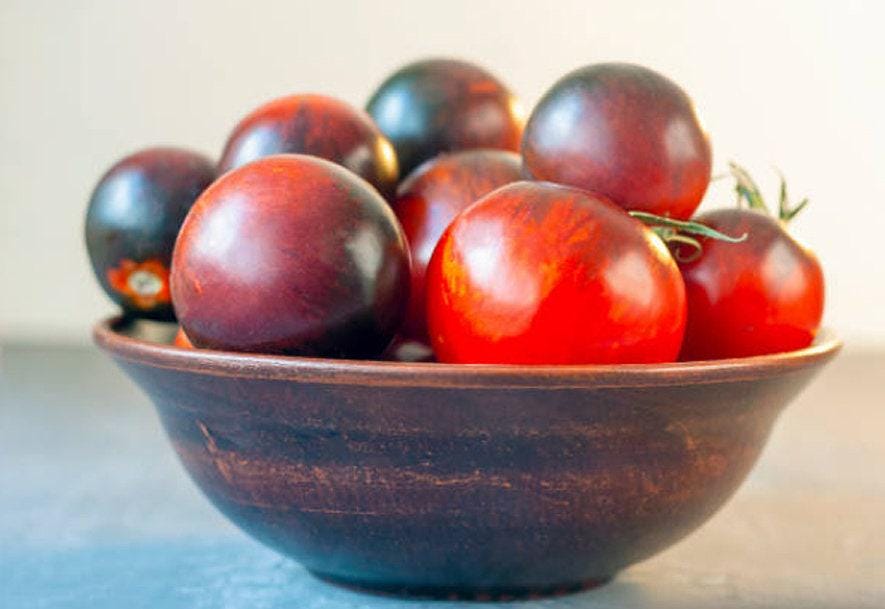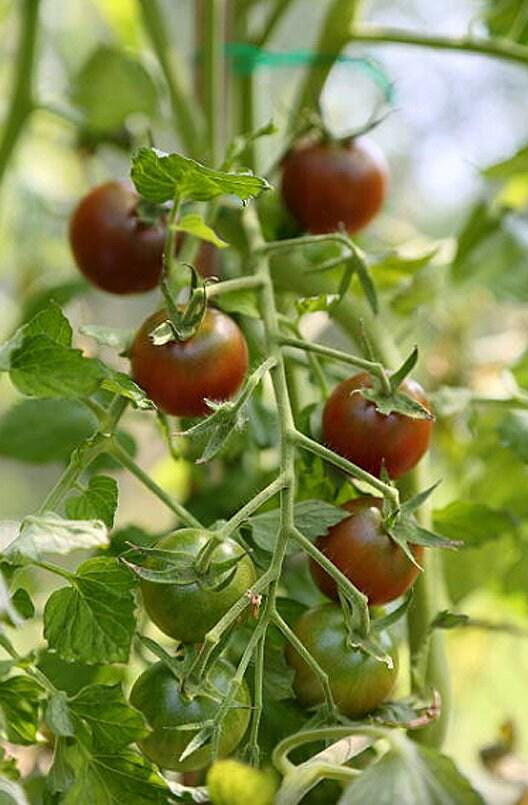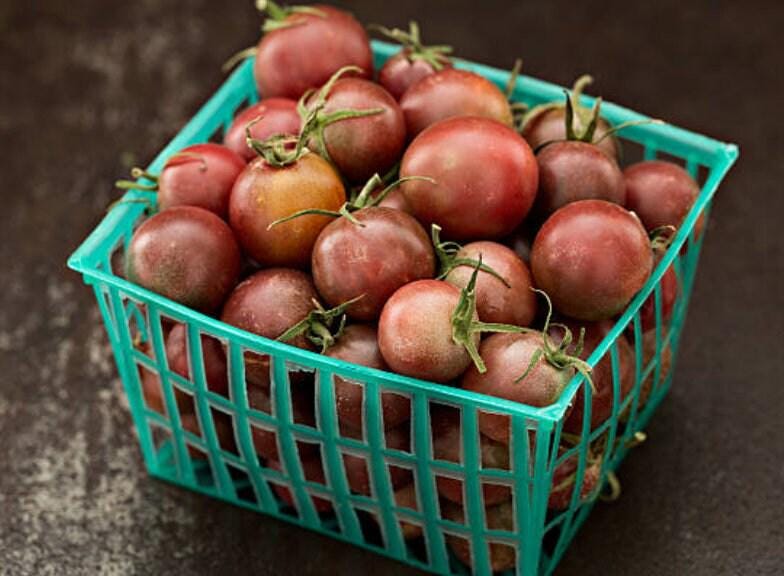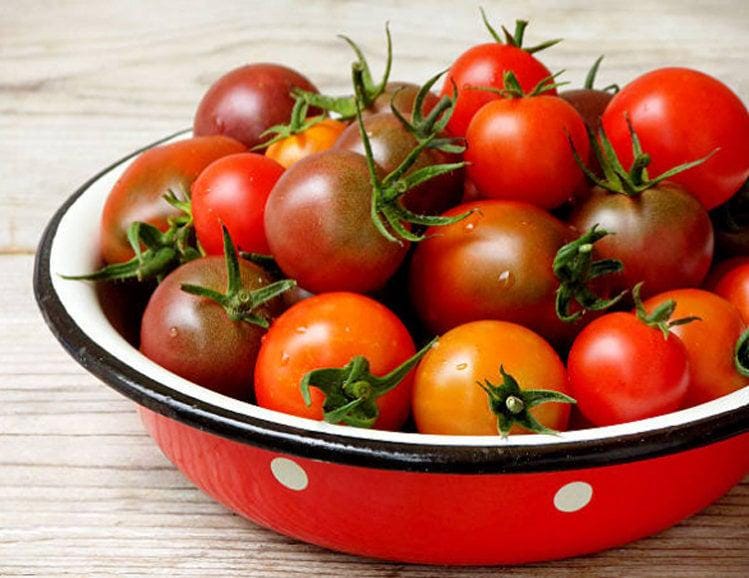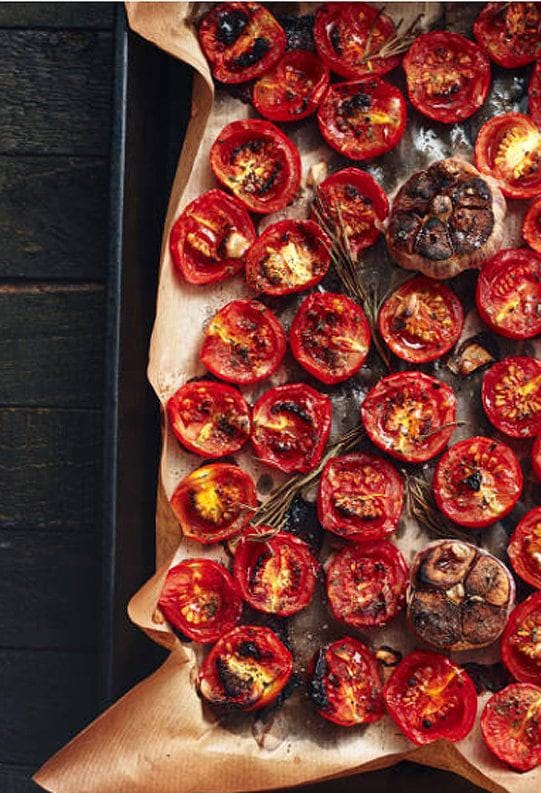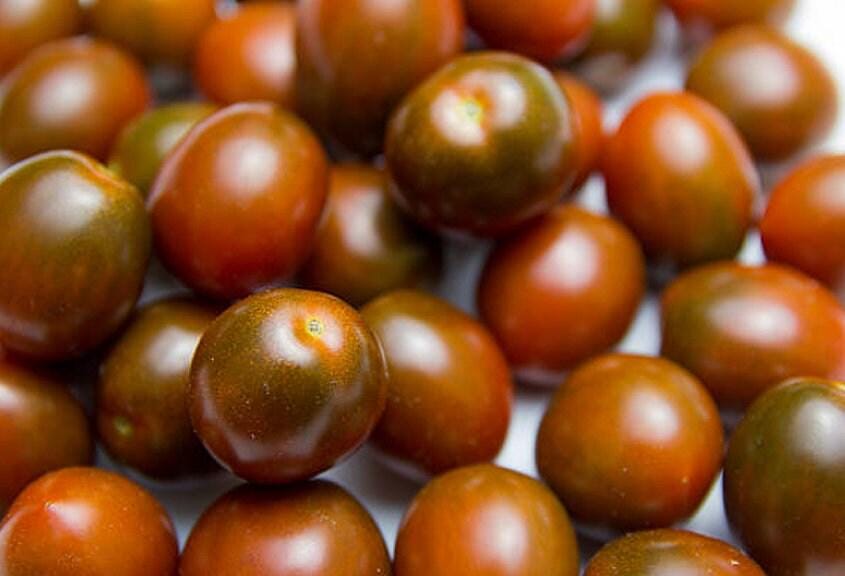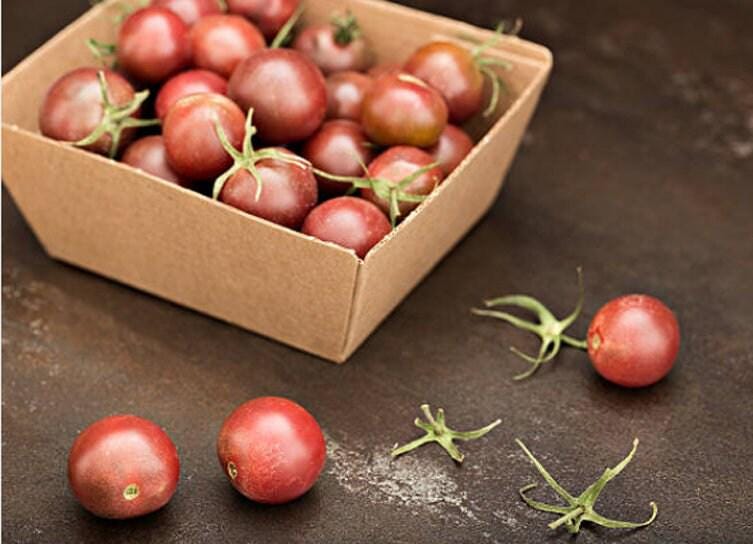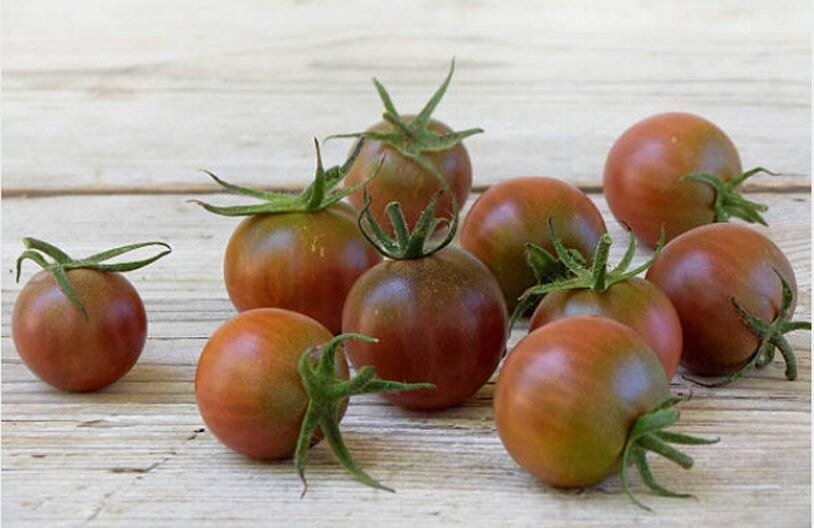Beautiful heirloom black cherries look like large, dusky mahogany-purple grapes; they have that rich sweetly complex flavor that makes black tomatoes famous. The round, 1-inch fruits grow in abundant heavy clusters on vigorous, fast growing indeterminate plants. Large vines yield very well; very unique and delicious. Exceptionally hardy in intense desert heat and sun.
Sweet as candy and highly prolific. 65 days, indeterminate — 'Black Cherry' plants are vigorous and very productive. Their bite-sized fruits are cherry shaped but have dark, purplish coloring similar to the famous 'Cherokee Purple' tomato. Pop one in your mouth and you will be rewarded with a wonderfully complex flavor palate that is fruity, balanced, very rich, sweet, and intense. 'Black Cherry' has become a very popular variety and is worthy of your garden space.
~ planting ~
When to start inside: RECOMMENDED. Start tomatoes indoors 6-8 weeks before the last frost of spring, sowing the seeds in a flat 1/4" deep and 1" apart. Keep the temperature at 70-75 degrees F until germination, as well as providing adequate light in a sunny window or under a grow light; keep the soil moist, but make sure drainage is adequate. When the second set of leaves emerges, transplant the seedlings into individual pots; bury the stems up to the lowest set of leaves to grow strongly rooted plants. A week before planting the seedlings outside, begin exposing them to the weather during the day to harden them; tomatoes cannot endure cold weather, and should not be transplanted outside until all threat of frost has passed. When the soil temperature reaches at least 70 degrees F, plant the seedlings in full sun and very rich soil; once more, bury the entire stem up to the lowest set of leaves. Space the plants 2' apart.
When to sow outside: Recommended for mild winter climates only: 1 to 2 weeks before average last frost and when soil temperatures are at least 60° F.
~ growing ~
Indeterminate tomato varieties often perform best when provided with a trellis or support, since this protects them from various pests and diseases in connection with too much soil contact. Put the supports in place before the seedlings develop vines. As the vines begin to grow, tying them to the support helps their development. Since temperatures below 55 degrees F can damage production, protect the plants if temperatures drop. A thick layer of mulch helps conserve moisture and control weeds. Pruning the "suckers," or shoots that grow between the main stem and the branches, will greatly improve the production and strength of the plant.
~ harvesting ~
Test the ripeness of tomatoes by pressing them gently; the flesh should yield slightly. The mature color also indicates ripeness. If the stem does not come easily off the vine, cut it with a scissors. Vine ripened tomatoes have the best flavor, but as soon as frost comes, all tomatoes should be harvested, even the green ones. Unripe tomatoes will ripen eventually if kept in a warm place out of direct sunlight.

